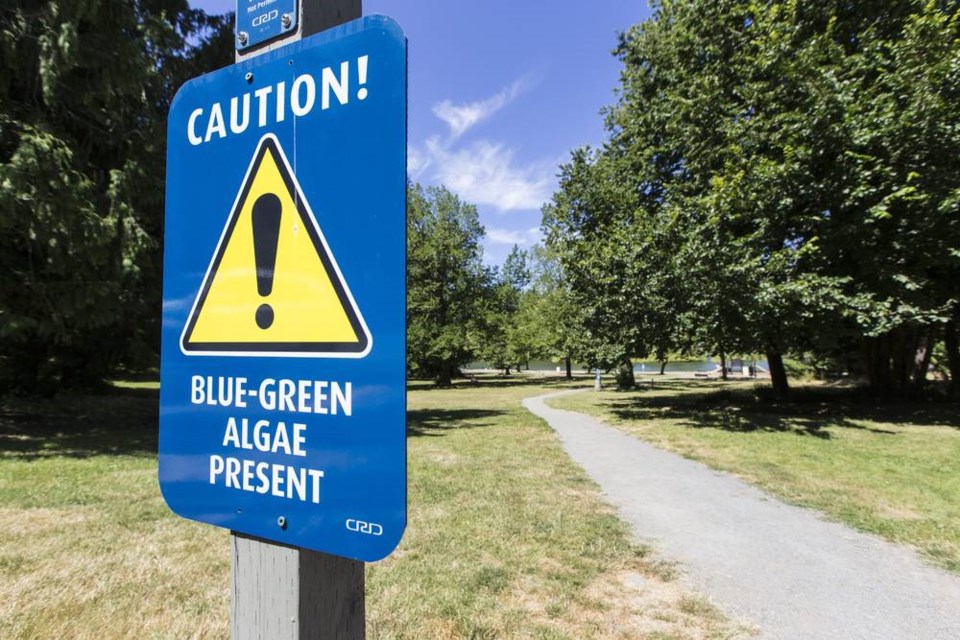People accustomed to seeing blue-green algae blooms at Elk/Beaver Lakes can now help provincial water-quality experts better understand the blooms by reporting them to Algae Watch, a new website that encourages citizen science-data gathering.
Ranging in size from microscopic single cells to large seaweeds, algae are a natural part of all aquatic ecosystems, providing food for fish and supplying much of the oxygen we breathe.
However, prolific growth can cause a dense mass or bloom to form.
While some blooms are harmless, others, such as Cyanobacteria (blue-green algae), produce cyanotoxins that can cause abdominal upsets in humans and can be lethal for small animals, such as dogs.
To better understand where and when algae blooms happen around the province, the Environment Ministry has developed Algae Watch, where people are invited to contribute information to create a comprehensive picture of the situation in B.C.
The website helps people differentiate between algae blooms from other natural phenomena, such as foam or pollen, which can sometimes look like blooms.
“The website can help us track changes over time and identify areas of the province that are getting more algae blooms. We can then start investigating what’s causing these changes,” said Mike Sokal, a water-quality limnologist for the Ministry of Environment and Climate Change Strategy.
“It’s really encouraging to see people interested in what’s happening at their lake. Some of those concerned citizens become champions for the lake and start local sampling programs.”
People can use the online submission form to provide information on the location, extent and photos of algae bloom and access links to provincial health authorities in the event of a cyanobacteria bloom.
The province recently announced a contribution of $750,000 towards a $1.4-million water-quality improvement project to tackle frequent blue-green algae blooms in Elk and Beaver lakes.
The project, spearheaded by the Capital Regional District, will employ a high-efficiency hypolimnetic oxygenator system, which will pump oxygen to the lower layer of Elk Lake every day. The system will tackle nutrients that have accumulated in the lake bottom over the years. The nutrient-rich sediment gets drawn back into the water column when the water oxygen levels become low, a major contributor to algae blooms.
Experts plan to use a destratification system — an apparatus that promotes oxygenation by mixing stratified layers of temperature and plant life — on the smaller and shallower Beaver Lake.
Both systems are expected to be operating by spring next year.
That will be good news for the 1.7-million swimmers, rowers, anglers and pet owners who have had to curtail their visits to Elk/Beaver Lake Regional Park during increasingly frequent algae blooms in recent years.
For more information, go to gov.bc.ca/gov/content/environment/air-land-water/water/water-quality/algae-watch.



